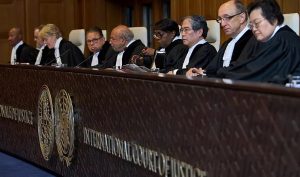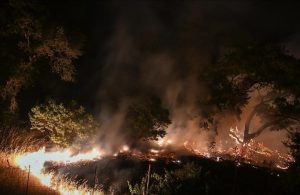Israel fires at protesters in Syrian border village, wounding one
3 min readOn Friday, the Israeli military reported that its forces shot and wounded a protester in a border village in southern Syria. The protest was in response to the Israeli military’s presence in Maariyah, a village near the Golan Heights, which Israel occupies. The village lies just outside the demilitarized buffer zone established in the 1974 ceasefire agreement between Israel and Syria.
The protestors gathered to demand an end to Israel’s military presence in the region. According to local residents, Israel has positioned itself in an abandoned Syrian army base in Maariyah and is preventing farmers from accessing their lands. Abdulraouf Abu Zalfa, the village headman, called on the United Nations to remove Israel’s military presence, citing the 1974 agreement between Syria and Israel. He emphasized that this violation of the ceasefire has been causing significant disruption to the lives of local inhabitants.
This incident follows a series of escalations in the region, particularly after Syrian President Bashar al-Assad’s fall from power last weekend. Israel has carried out numerous airstrikes across Syria since then, further inflaming tensions. Israel has also been accused of violating the 1974 ceasefire by sending troops into the United Nations-patrolled buffer zone, thereby seizing a portion of southern Syria. Critics argue that Israel is using the political chaos in Syria following Assad’s removal as an opportunity to extend its territorial control.
Israel justifies its actions, describing them as a defensive measure aimed at securing its northern border. Israeli officials maintain that the military presence is temporary and meant to protect the country’s security interests. However, this explanation has not stopped international criticism. United Nations Secretary-General Antonio Guterres voiced his concerns on Thursday, urging Israel to cease its airstrikes in Syria, as they violate the country’s sovereignty and territorial integrity.
The Golan Heights, a strategic plateau, has been at the center of the Israeli-Syrian conflict for decades. Israel captured the region during the 1967 Six-Day War and later annexed it, a move that has not been recognized by most of the international community. Israel’s occupation of the Golan Heights remains a point of contention in the ongoing Israeli-Palestinian and Israeli-Syrian conflicts.
Israeli Prime Minister Benjamin Netanyahu reinforced Israel’s stance on the region on Tuesday, stating that Israeli forces would remain in the Golan Heights until a new security arrangement could be reached. He emphasized that the priority was ensuring Israel’s security, and that the Golan Heights was critical in achieving this goal.
The developments in Maariyah, including the shooting of a protestor, have drawn widespread attention to the ongoing tensions between Israel and Syria, as well as the broader geopolitical situation in the Middle East. The United Nations and various international bodies continue to monitor the situation, calling for restraint from all parties involved.
For Syria, the loss of territory and military encroachment on sovereign land has only added to the ongoing instability following Assad’s ouster. The international community remains divided on how to address Israel’s actions in the region, with some countries condemning Israel’s military operations and others offering support for its security measures. As the situation develops, the long-standing territorial disputes and security concerns in the region are likely to remain a central issue in Middle Eastern geopolitics.







